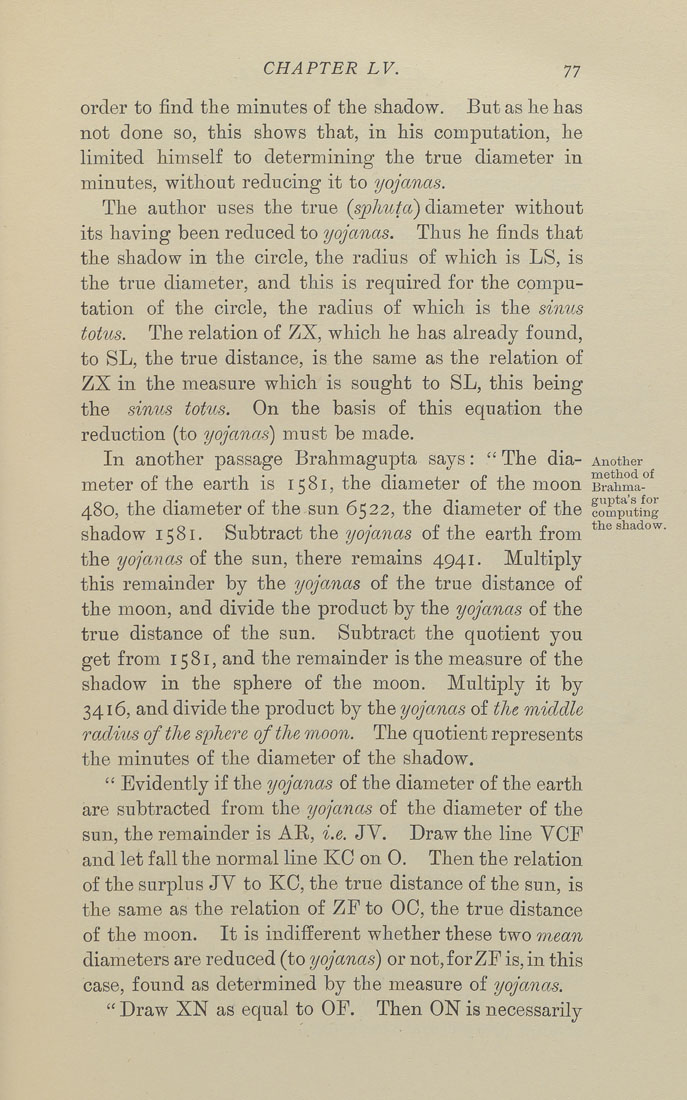CHAPTER LV. 77
order to find the minutes of the shadow. But as he has
not done so, this shows that, in his computation, he
limited himself to determining the true diameter in
minutes, without reducing it to yojancts.
The author uses the true (sphuta) diameter without
its having been reduced to yojanas. Thus he finds that
the shadow in the circle, the radius of which is LS, is
the true diameter, and this is required for the compu¬
tation of the circle, the radius of which is the sinus
totus. The relation of ZX, which he has already found,
to SL, the true distance, is the same as the relation of
ZX in the measure which is sought to SL, this being
the sinus totus. On the basis of this equation the
reduction (to yojancts) must be made.
In another passage Brahmagupta says: " The dia- Another
meter of the earth is 15 81, the diameter of the moon pnihma-
480, the diameter of the sun 6522, the diameter of the Computing
shadow 15 81. Subtract the yojctnas of the earth from *^'' shadow.
the yojctncts of the sun, there remains 4941. Multiply
this remainder by the yojanas of the true distance of
the moon, and divide the product by the yojctnas of the
true distance of the sun. Subtract the quotient you
get from 15 81, and the remainder is the measure of the
shadow in the sphere of the moon. Multiply it by
3416, and divide the product by the yojancts of the middle
radius of the sphere of the moon. The c[uotient represents
the minutes of the diameter of the shadow.
" Evidently if the yojanas of the diameter of the earth
are subtracted from the yojctnas of the diameter of the
sun, the remainder is AE, i.e. JV. Draw the line VCF
and let fall the normal line KC on 0. Then the relation
of the surplus JV to KC, the true distance of the sun, is
the same as the relation of ZF to 00, the true distance
of the moon. It is indifferent whether these two mean
diameters are reduced (to yojanas) or not, for ZF is, in this
case, found as determined by the measure of yojanas.
" Draw XN as equal to OF, Then ON is necessarily
|








